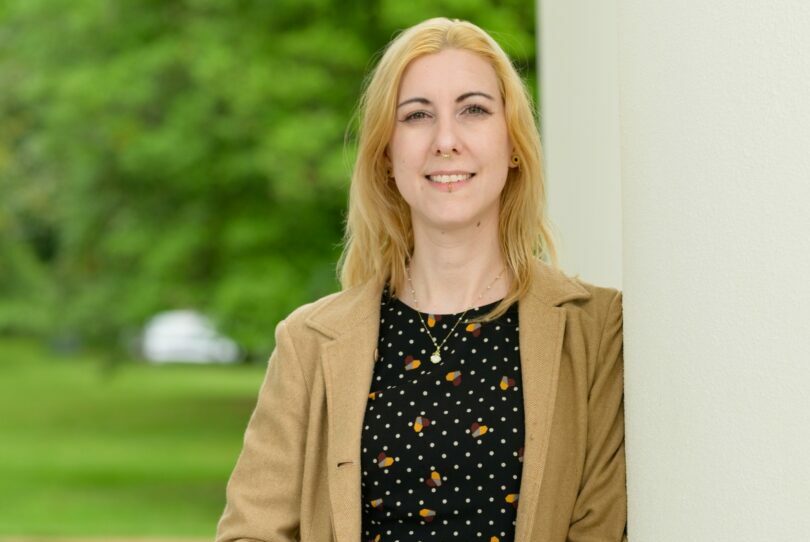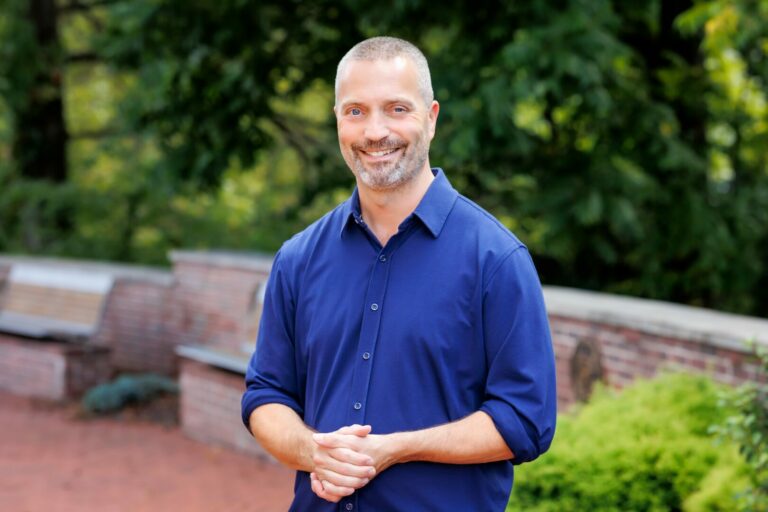Ernesto Rodriguez shared their story and experiences with us recently and you can find our conversation below.
Ernesto, so good to connect and we’re excited to share your story and insights with our audience. There’s a ton to learn from your story, but let’s start with a warm up before we get into the heart of the interview. What makes you lose track of time—and find yourself again?
Getting out in nature brings me into the moment. Surrounded by blues, greens and browns. Feeling the breeze, listening to the silence, watching the sun’s rays coming through the trees. You feel the connection to life, all life around you. I had an experience in Yellowstone while doing a photoshoot. My friend who was helping me had the same epiphany at the same time. We had been out in the wilderness for 10 days. When suddenly, like flipping a switch in our brains, we didn’t feel separate from the environment. We were one with the animals and surrounding landscape. My sense of self was not defined by my body; it was everything nature. We then proceeded to walk through a herd of elk that were grazing in this meadow. They weren’t concerned or bothered that we were walking through. We are wired to be in nature; it is our biology, who we are. The curiosity, joy and wonder of nature.
Looking through a camera brings me into the moment. Creating an image you have to experience the light and color. Shapes, textures, patterns, negative space, leading lines, rule of thirds compose your message. What do you want the viewer to come away with? In life, light creates color. When viewing an image, color creates the experience of light. You want to bring the viewer into the moment.
Can you briefly introduce yourself and share what makes you or your brand unique?
Imagine walking into a classroom and you’re standing under a tree. How would you feel? “Planting” ceiling murals of trees in classrooms is the embodiment and application of 50 years of empirical science developed at the University of Michigan. Attention Restoration Theory (ART) documents that when we view trees, real or photographic, it calms us and helps us focus. Founding Nature In The Classroom is also the intersection of my life’s path and careers as a school psychologist, photographer and park ranger.
Becoming a park ranger connected me to the research on the influence of trees on the brain. Which led to the thought, “Why isn’t this being used in schools?” Having worked in education I know teacher’s walls are sacred, you don’t touch them. The ceilings however are open for grab. So, I developed a method to create high resolution images of tree canopies and printing them on fire compliant ceiling tiles. It took calling on three principals before they let me install ceilings and conduct a pilot study. The results were instantaneous and reflected the science. Kids were calmer, focused quicker and were happier to be in school.
Tree ceilings are now installed in 19 school districts across 8 states, serving 9,500 students. We are working to reach that milestone of serving 10,000 students.
Thanks for sharing that. Would love to go back in time and hear about how your past might have impacted who you are today. What’s a moment that really shaped how you see the world?
After finishing my bachelor’s degree, I helped a friend of my dad’s deliver a bus down to Tegucigalpa, Honduras. Fresh out of college, I didn’t have much money, so I came up with what I thought was a fun and exciting plan: I’d hitchhike back.
That enthusiasm lasted—until the moment I actually had to do it. I found myself dropped off at a truck stop on the edge of Tegucigalpa, my backpack on the ground and my mind swirling: What on earth have I gotten myself into?
I wandered over to an old metal snack shack at the entrance and bought something to eat. Sitting on the curb in front of it, lost in thought and fear, I must have looked exactly how I felt—uncertain and out of place.
Just then, a delivery truck pulled up. The driver hopped out, loaded his hand truck, and as he passed me, he stopped. He looked down at me and simply said: “No le tenga miedo a la gente.” — “Don’t be afraid of people.”
It was exactly what I needed in that moment. His words jolted me back into courage. I stood up, walked over to a truck that was filling up, and asked the driver if he was heading to Guatemala. He smiled and said, “Sure, jump in.” And just like that, I was on my way.
It wasn’t until later that evening, sitting alone in a restaurant, that the significance of it all really hit me: the synchronicity, the wonder of that moment. A stranger’s words changed everything. The universe has a way of stepping up to guide us—but only if we trust our instincts and keep moving forward.
What have been the defining wounds of your life—and how have you healed them?
My first job after earning my bachelor’s degree was teaching at a private boarding high school. During the semester break, four other teachers and I organized a dive trip to Cabo San Lucas. Since the students provided their own vehicles, we didn’t need to rent a bus or book flights.
The first night after crossing the border into Mexico, however, several students decided to drive into town and visit local bars. The situation felt unsafe, so we turned around and returned to the school the very next day. The headmaster was furious. “How am I supposed to explain the cost of this trip to their parents? You’ll have to come up with another outing—you can’t just stay here on campus.”
So we did. We arranged a trip to the Esalen Institute instead. But when we returned for the start of the new semester, the headmaster called us into his office. He fired us all, then turned to me and asked, “You’re fired—but can you stay until we find a replacement?” Shocked, I replied, “I’m either good enough to keep teaching, or I’ll gather my belongings and leave now.” I left, angry and upset at being dismissed for no real reason.
That early experience at a boarding school planted the seed that eventually led me to become a school psychologist. Eight years later, while working as a psychologist at the American School in Dhahran, Saudi Arabia, I was given an unexpected sense of closure.
The spring of 1985 the principal’s daughter was home from her boarding school on the East Coast and began telling a story about her headmaster, who had just been fired. When she mentioned his last name, I immediately said his first name. Surprised, she asked, “You know him?”
It turned out he had been dismissed for something beyond his control—his wife was having an affair with one of the teachers, and he was the one who lost his job. I was stunned. Halfway around the world, I suddenly saw the end of my own story, the universe handing out justice. That moment taught me a lasting lesson: never to carry a grudge, especially when the situation is outside your control. Simply let go and move forward.
So a lot of these questions go deep, but if you are open to it, we’ve got a few more questions that we’d love to get your take on. Whose ideas do you rely on most that aren’t your own?
Stephen and Rachel Kaplan developed Attention Restoration Theory (ART) at the University of Michigan in the 80s. We are biologically wired to view and interpret the pattern that defines nature, the fractal. Fractals are a scalable pattern that compose clouds, coast lines, forests and leaves. When we view trees, real or photographic, it calms us and helps us focus. The restorative function of nature has been verified empirically several hundred times. Working as a park ranger and interpretive naturalist exposed me to this idea. My training as a school psychologist said, this belongs in the classroom. We can bring nature inside by planting ceiling murals of trees in the classroom. Nature In The Classroom is the embodiment and application of ART. Tree ceilings are now installed in 19 school districts throughout eight states, serving 9,500 students. The feedback from teachers and students accurately reflect the science. Students are calmer, settle down quicker, and are happier to be in school. It is becoming mainstream for therapists to prescribe walks in nature to help people manage anxiety, calm down and focus.
Okay, we’ve made it essentially to the end. One last question before you go. If immortality were real, what would you build?
I am not immortal, but ideas can be. We live only a brief moment, yet we are made of atoms born from ancient cosmic dust—reminders that we are, at our core, nature itself. The urban environment, however, often obscures this connection and the calm it brings. A recent study from Spain, known as the 3-30-300 rule, shows that mental health improves when we can see three trees from our window, live in neighborhoods with 30% tree coverage, and reside within 300 meters of a park. Therapists are even prescribing walks in nature to help ease anxiety and restore calm. Outdoor nature schools are becoming more popular, but schools in many inner-city neighborhoods still lack greenery. Some are even built without windows, a response to the reality of gun violence.
This idea is not about me. Bringing the calming science of trees into classrooms is a movement that will continue long after I’m gone. As one kindergartner said when asked what she liked about her tree ceiling: “It calms me up.”
Contact Info:
- Website: https://www.natureintheclassroom.org
- Instagram: https://www.instagram.com/natureintheclassroom/
- Linkedin: https://www.linkedin.com/in/ernierodriguez/
- Facebook: https://www.facebook.com/NatureInTheClassroom


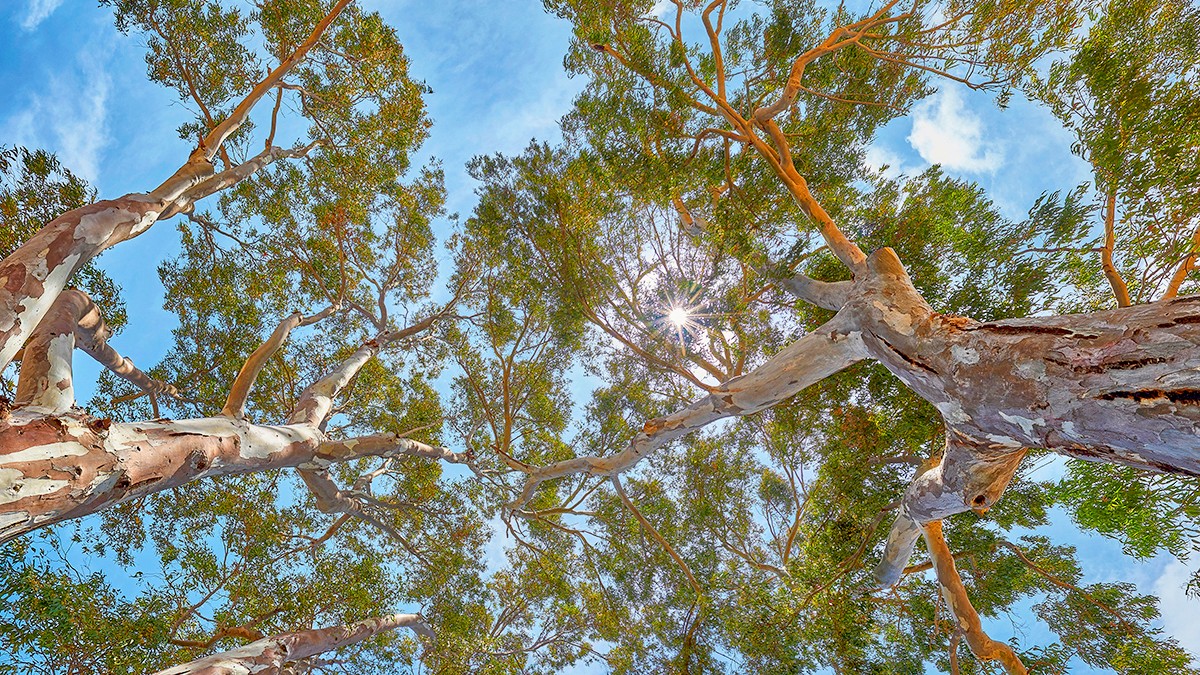

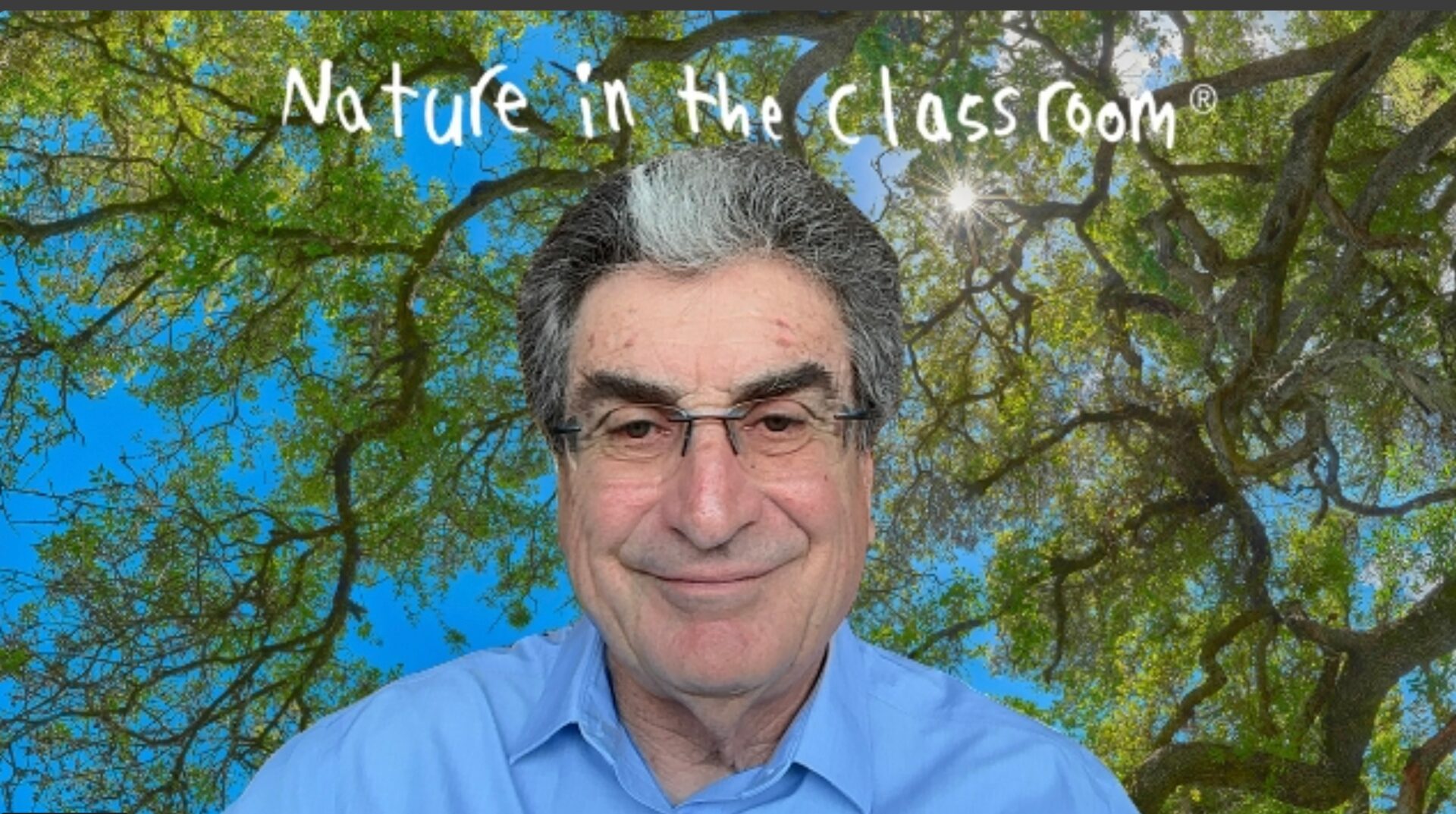
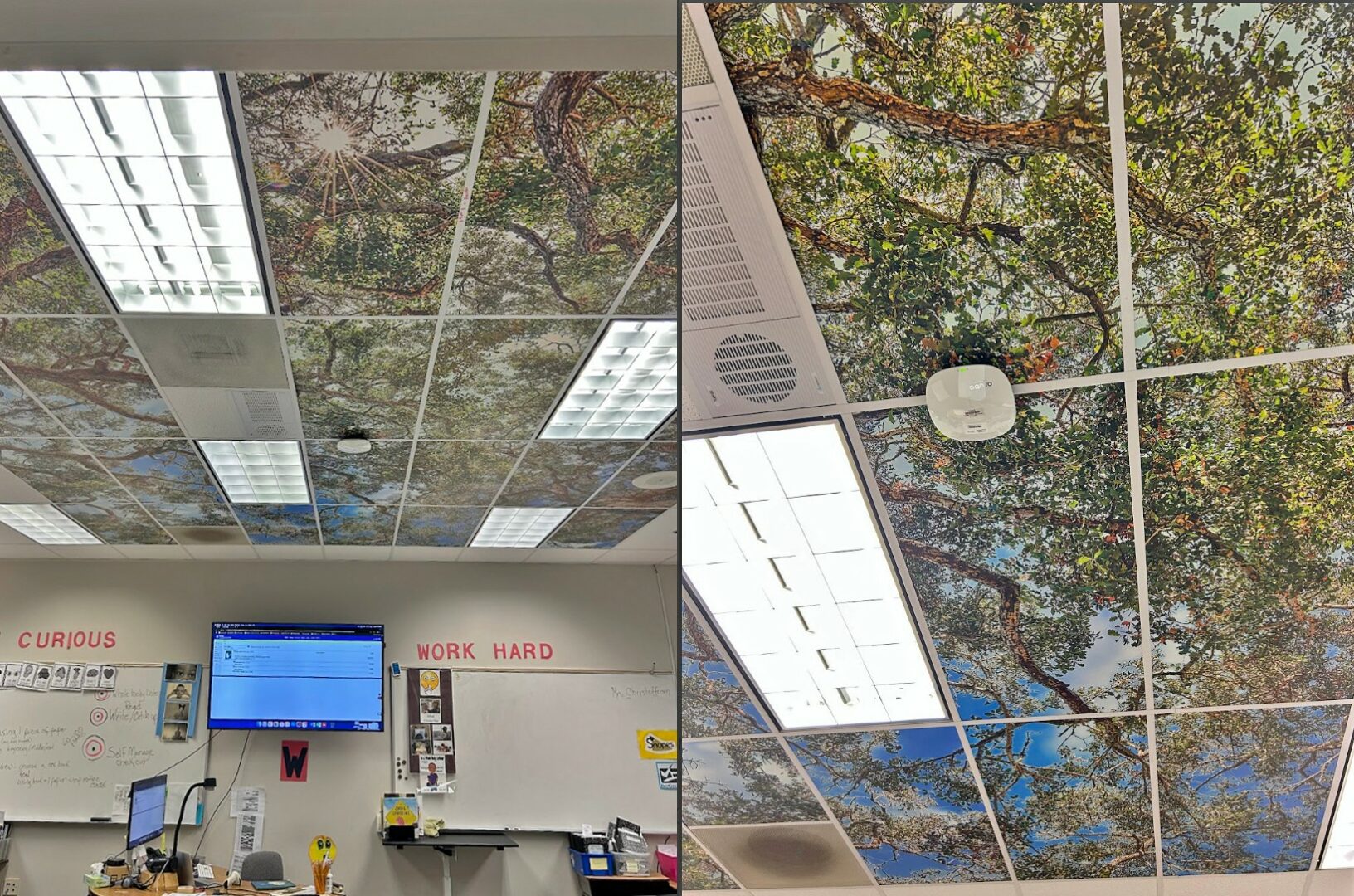
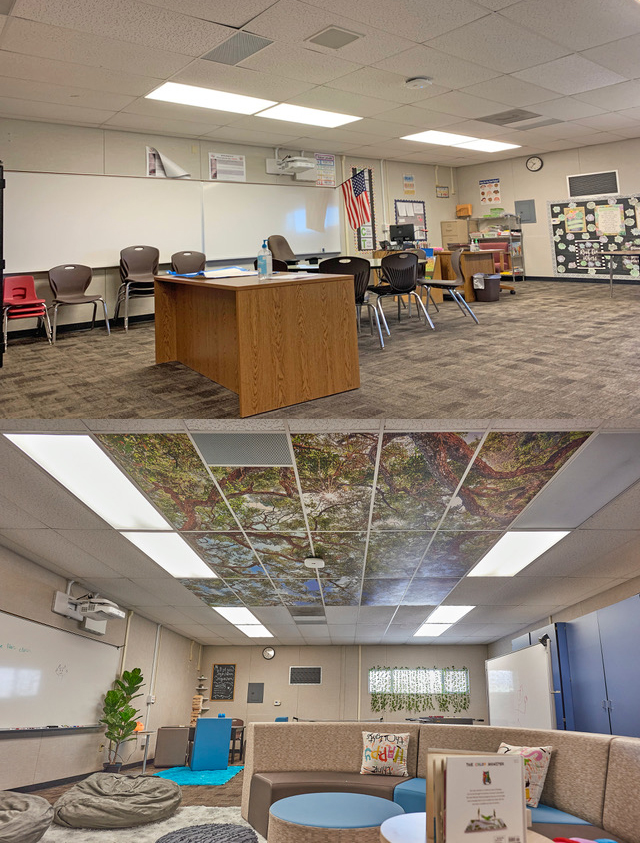
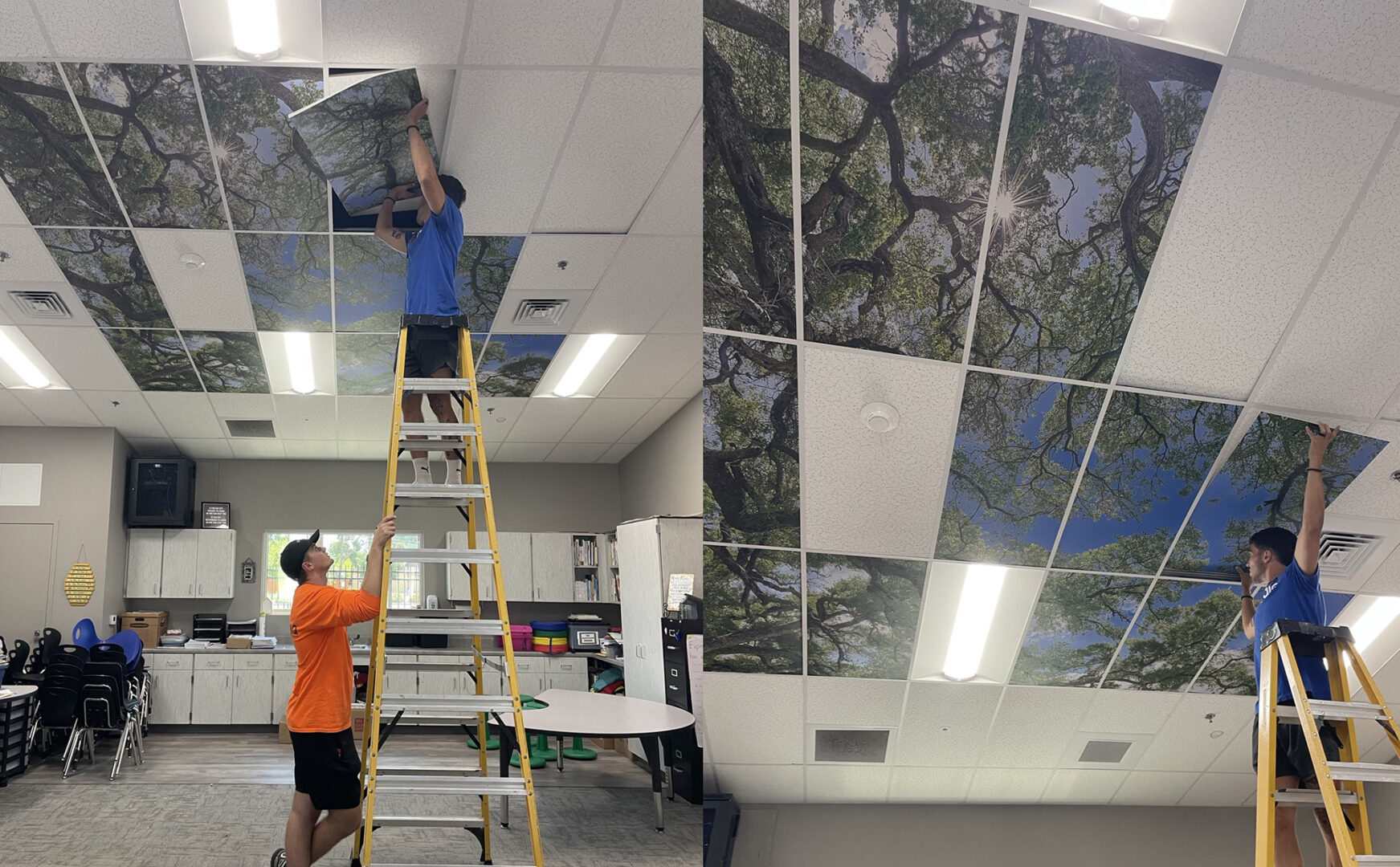
Image Credits
Lead photo of kids pointing at ceiling: Kaylee Dickens
Photo of ceiling being installed, guy on ladder: Jennifer Butler
All other photos: Ernesto Rodriguez
so if you or someone you know deserves recognition please let us know here.



